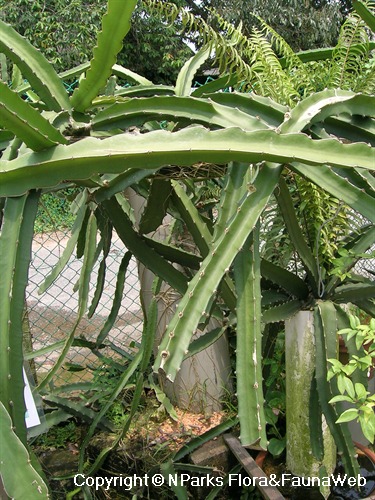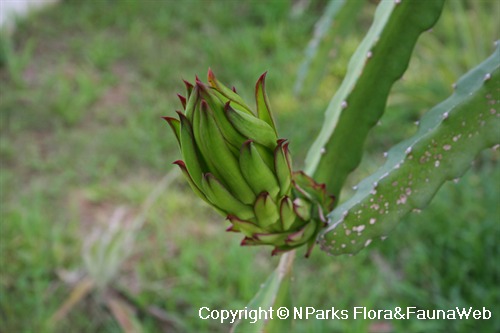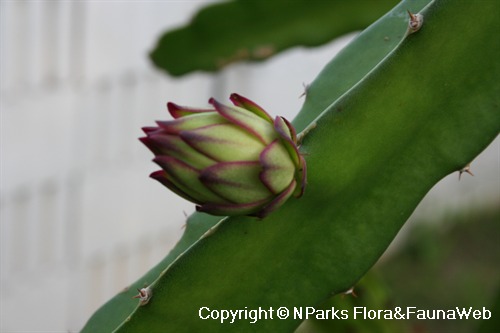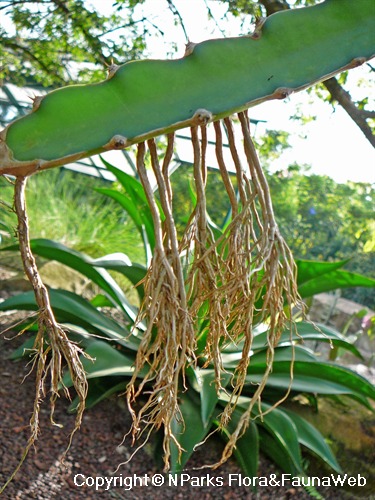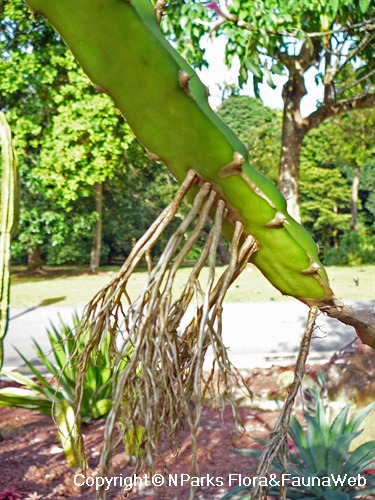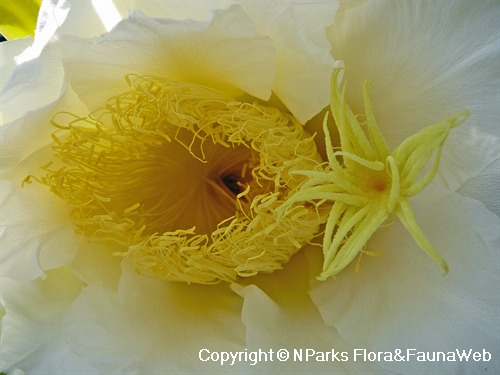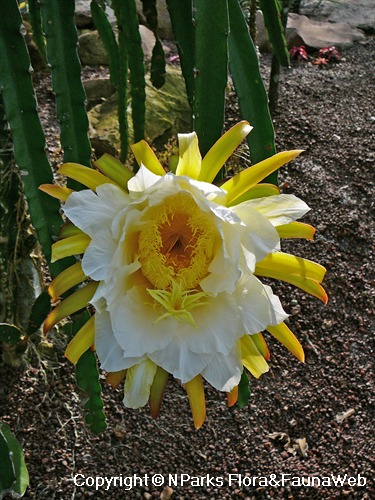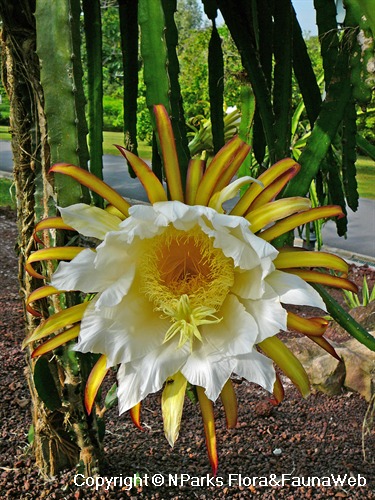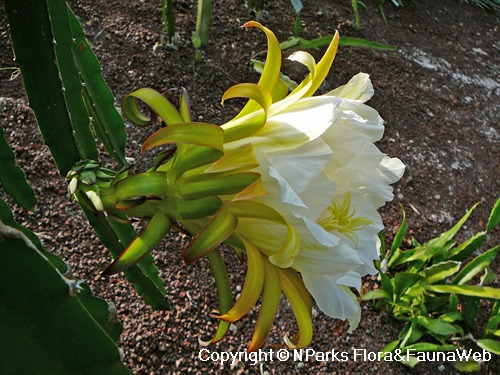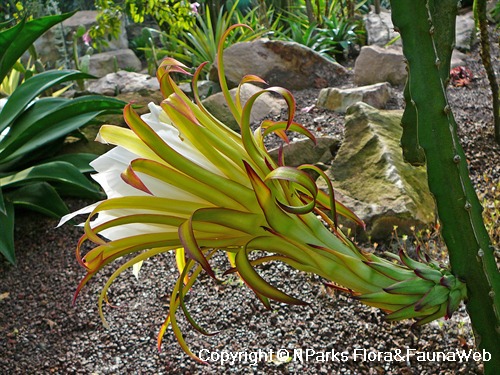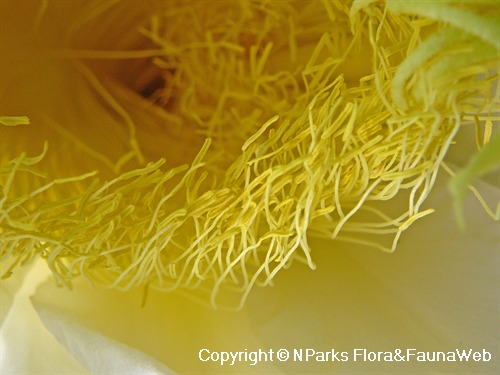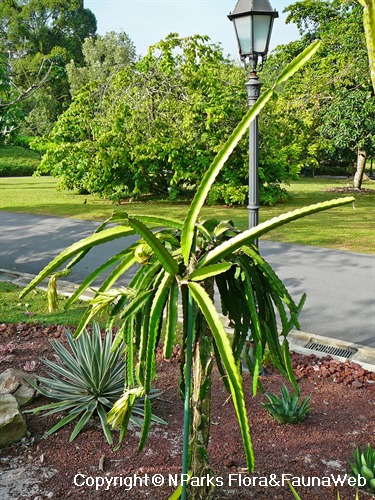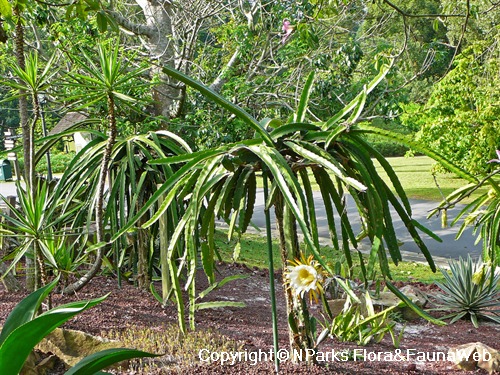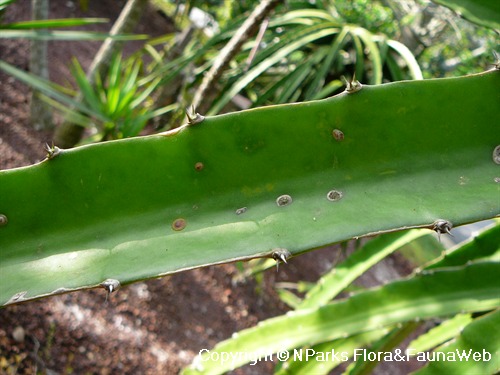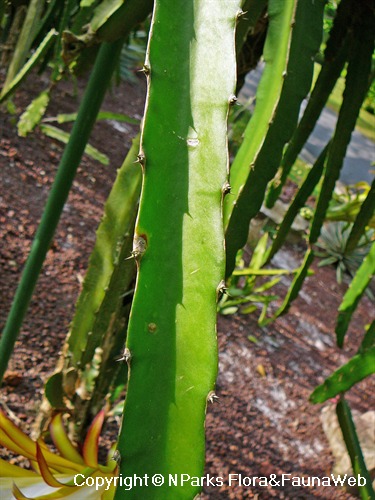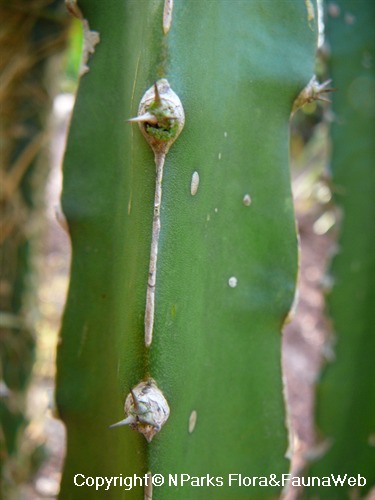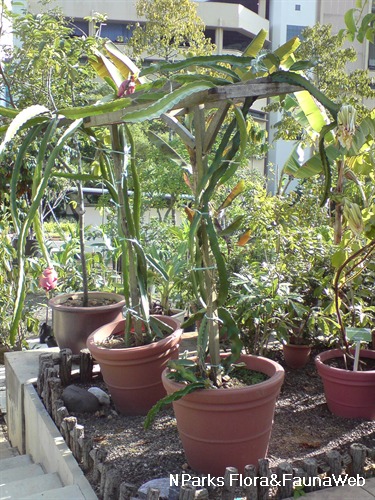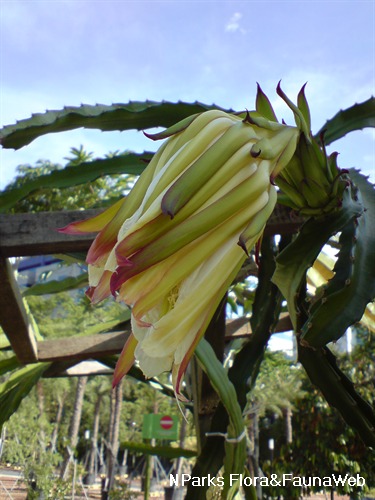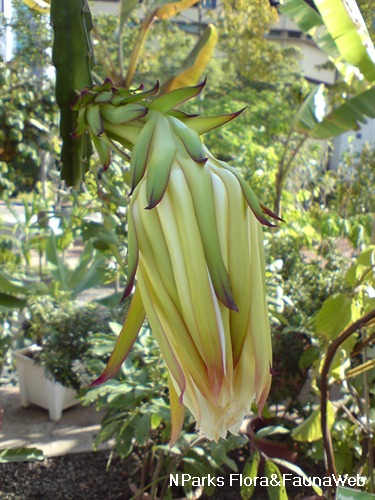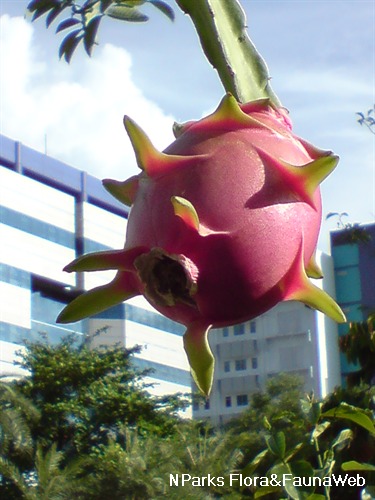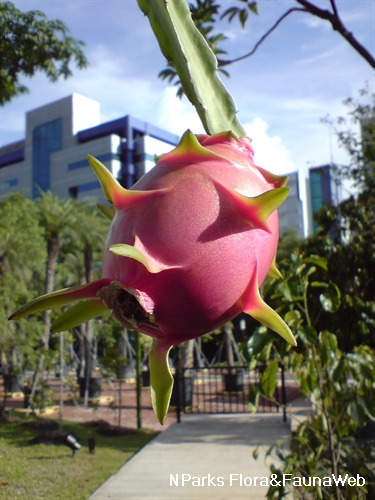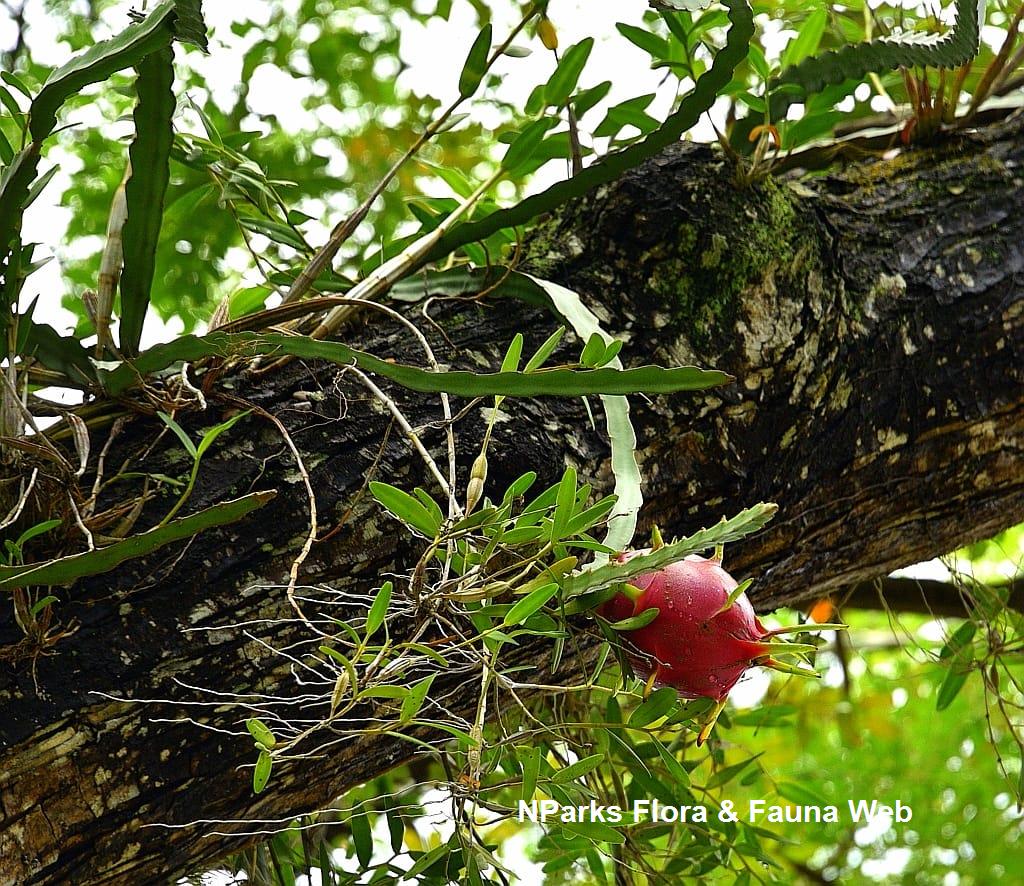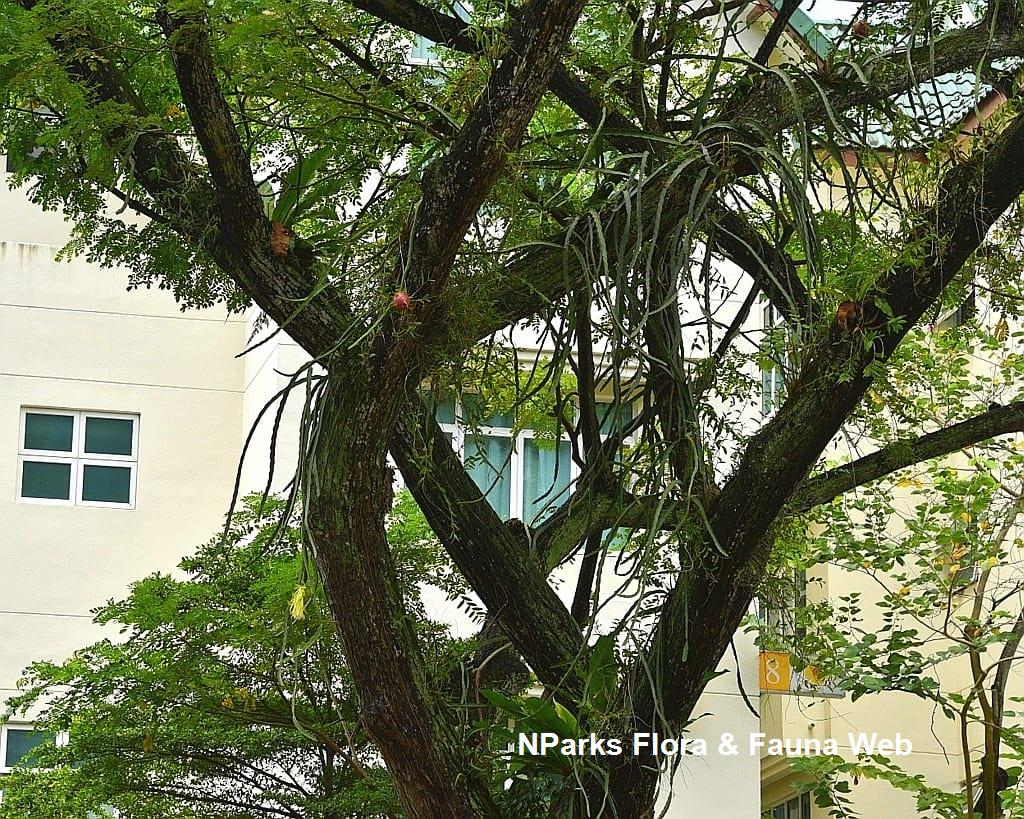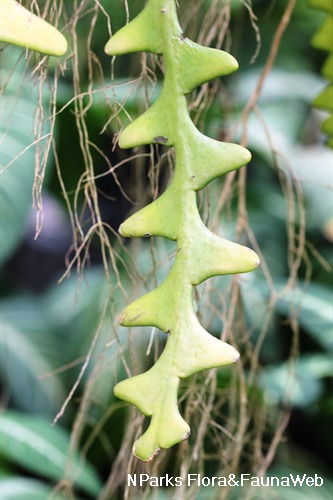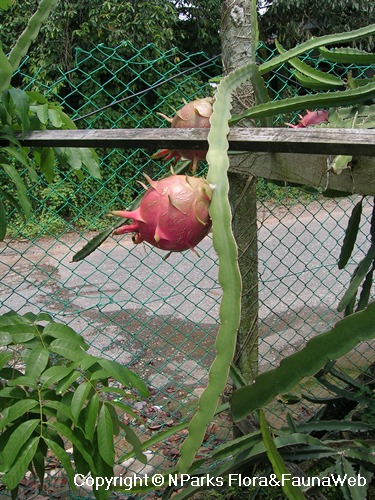
Back
Selenicereus undatus (Haw.) D.R.Hunt
| Family Name: | Cactaceae |
| Synonyms: | Hylocereus undatus |
| Common Name: | Dragon Fruit, Pitaya, Common Night Blooming Cerus, Red Skin Dragon Fruit, 火龙果 |
Name
Classifications and Characteristics
| Plant Division | Angiosperms (Flowering Seed Plants) (Dicotyledon) |
|---|---|
| Plant Growth Form | Climber, Succulent Plant, Epiphyte |
| Lifespan (in Singapore) | Perennial |
| Mode of Nutrition | Autotrophic |
| Maximum Height | 10 m |
Biogeography
| Native Distribution | Central America, Mexico to Colombia |
|---|
Description and Ethnobotany
| Growth Form | Epiphytic cactus with a sprawling or vining growth habit. As an epiphyte, it can reach up to 10 m tall. |
|---|---|
| Roots | Aerial roots allow this species to climb upwards. In nature, this species grows on top of trees or rocks. |
| Stems | Fleshy, angular stems have 3 wings up to 5 cm wide and scalloped margins. |
| Flowers | Fragrant, whitish to greenish-yellow flowers (25-35 cm long, 30 cm wide) are composed of numerous white- or yellow-tipped stamens and a large stigma with a star-shaped tip. They open at night and close shortly after daybreak. |
| Fruit | Oval to oblong fruits (up to 12 cm long, 9 cm wide) have yellow-green, strap-like appendages that create a scaly, dragon-like texture. The edible, sweet white flesh contains numerous, black seeds which are also edible. |
| Cultivation | It grows best in well-drained, loamy soil. |
| Ethnobotanical Uses | Edible Plant Parts : Edible Fruits Food (Fruit or Vegetable): The white flesh along with its seeds is typically eaten raw. |
Landscaping Features
| Desirable Plant Features | Ornamental Flowers, Fragrant (Flowers) (Night) |
|---|---|
| Landscape Uses | Small Gardens, Trellis / Arbour / Pergola |
| Thematic Landscaping | Rockery / Desert Garden, Economic Garden |
Plant Care and Propagation
| Light Preference | Full Sun |
|---|---|
| Water Preference | Moderate Water |
| Plant Growth Rate | Fast |
| Rootzone Tolerance | Drought Tolerant, Well-Drained Soils |
Floral (Angiosperm)
| Flower & Plant Sexuality | Bisexual Flowers |
| Flower Colour(s) | White |
|---|---|
| Flower Texture(s) | Smooth |
| Flower Grouping | Solitary |
| Flower Symmetry | Radial |
| Individual Flower Shape | Trumpet-shaped |
| Flowering Period | Free-Flowering |
| Flowering Opening Time | Night (dusk to dawn) |
| Flower Lifespan on Plant | 1 Night |
| Flowering Habit | Polycarpic |
| Flower Colour(s) Remarks | Greenish-yellow |
| Flowering Period Remarks | In the tropics, plants flower 4-6 times a year. |
Fruit, Seed and Spore
| Mature Fruit Colour(s) | Red, Green, Pink |
|---|---|
| Mature Fruit Texture(s) | Smooth |
| Fruit Classification | Simple Fruit |
| Fruit Type | |
| Mature Seed Colour(s) | Black |
| Mature Seed Texture(s) | Smooth, Glossy / Shiny |
| Seed Quantity Per Fruit | Numerous (>20) |
Image Repository
Others
| Master ID | 123 |
|---|---|
| Species ID | 1419 |
| Flora Disclaimer | The information in this website has been compiled from reliable sources, such as reference works on medicinal plants. It is not a substitute for medical advice or treatment and NParks does not purport to provide any medical advice. Readers should always consult his/her physician before using or consuming a plant for medicinal purposes. |

